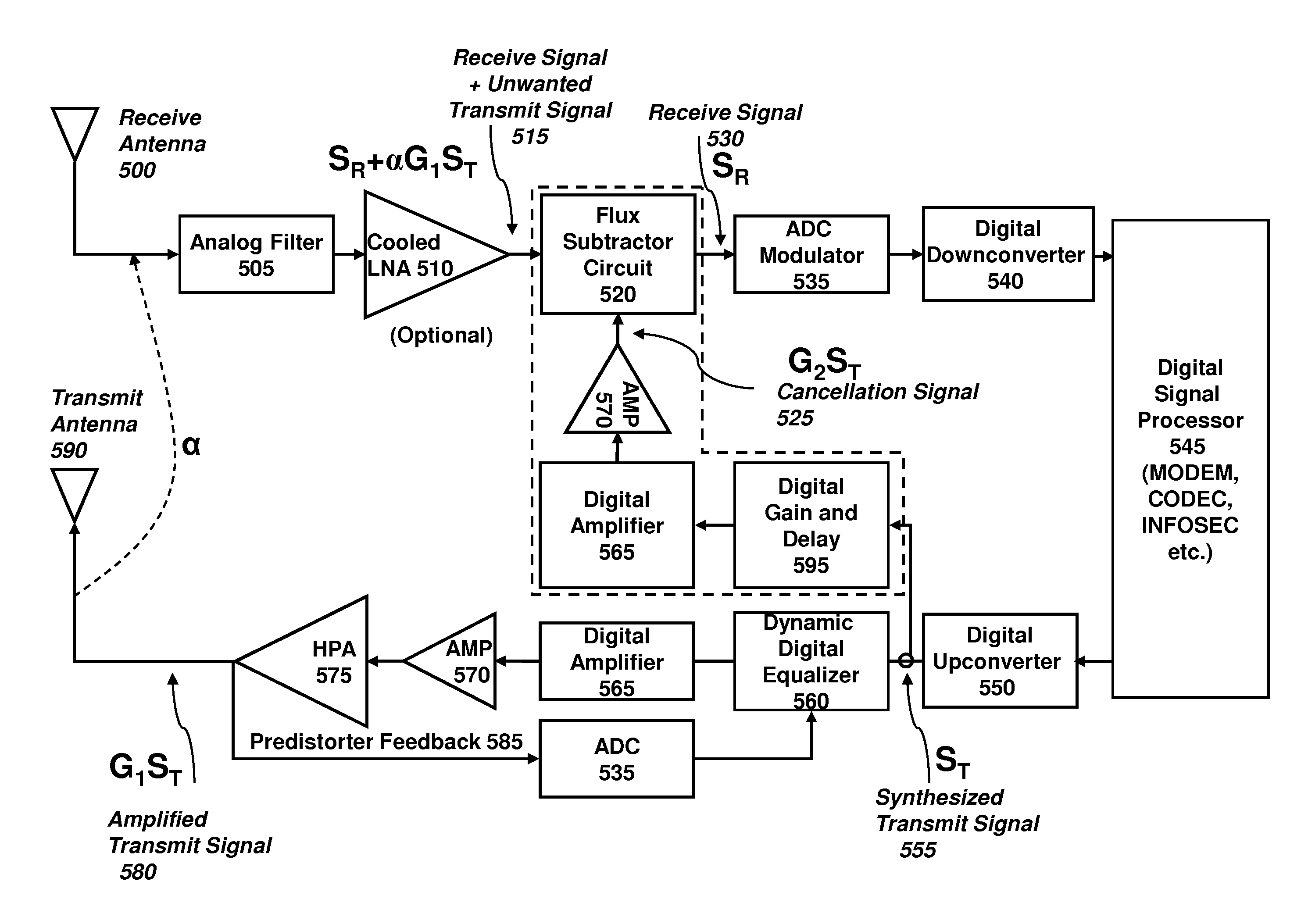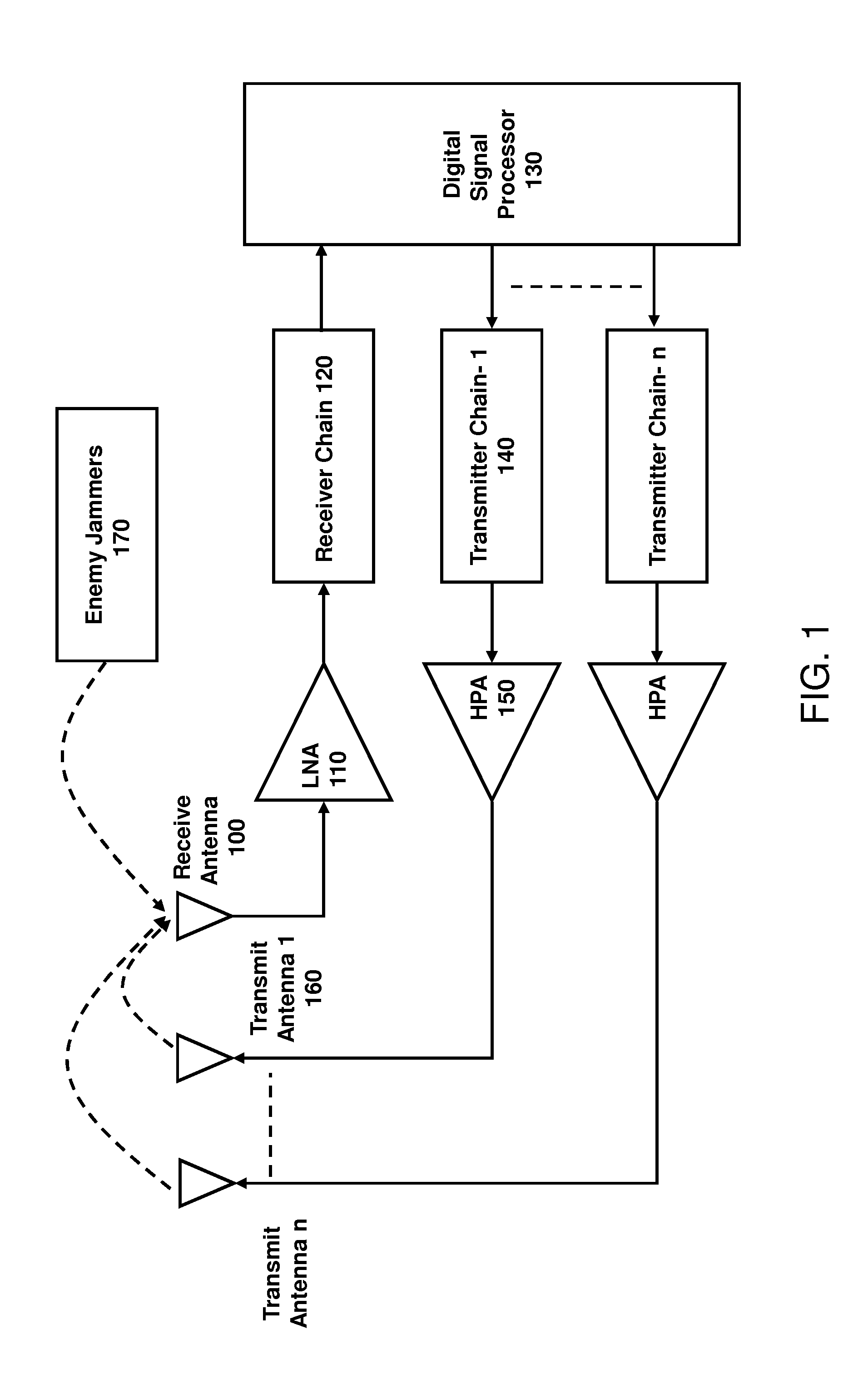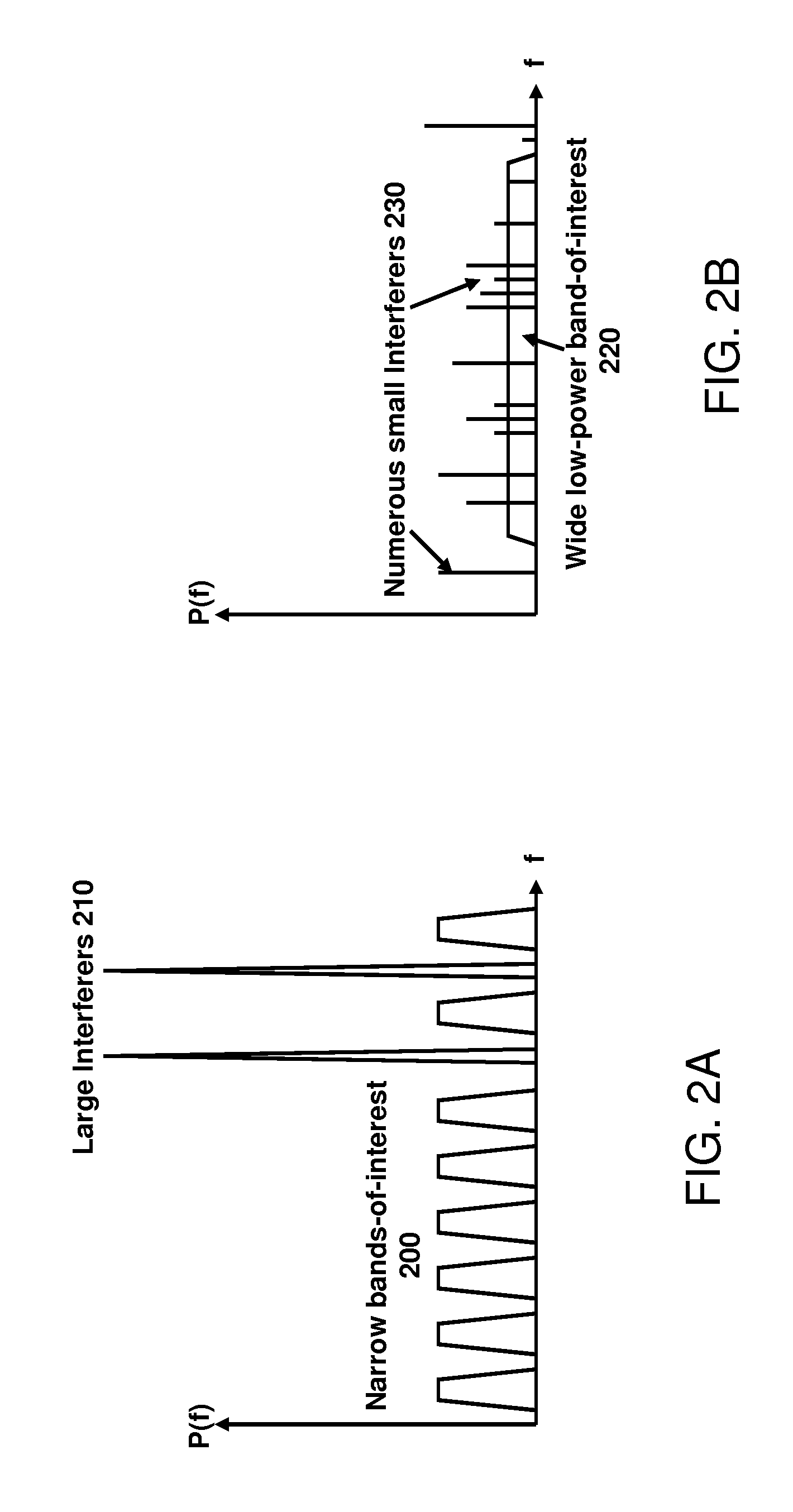System and method for digital interference cancellation
a technology of digital interference and cancellation method, applied in the direction of transmission, electrical equipment, etc., can solve the problems of inability to achieve the effect of other methods, inability to easily achieve interferer synthesis features that cannot be easily achieved by other methods, and inability to achieve broadband nonlinear distortion, etc., to achieve the effect of improving the effective dynamic range of an adc, facilitating the receiver design, and efficient implementation
- Summary
- Abstract
- Description
- Claims
- Application Information
AI Technical Summary
Benefits of technology
Problems solved by technology
Method used
Image
Examples
Embodiment Construction
[0048]A typically encountered problem is presented in FIG. 1. A radio communication system comprises both a receiver and a transmitter (FIG. 1), which are typically located near each other (co-located or co-site), The radio receiver antenna 100 receives not only the desired signal, but also undesired interfering signals broadcast from one or more nearby transmit antennas 160, and potentially even deliberate jamming signals 170. The receiver is, of course, designed to detect weak signals, with a low-noise amplifier LNA 110 and a sensitive receiver chain 120, finally ending with baseband signals that may be converted to digital form and processed by a digital signal processor 130. In contrast, the transmitter chain 140 generates large signals which are amplified in a high-power amplifier HPA 150. Even a small fraction of the large transmit signal can saturate elements within the receiver. The receiver, including but not limited to the LNA 110, has an amount of nonlinearity which may g...
PUM
 Login to View More
Login to View More Abstract
Description
Claims
Application Information
 Login to View More
Login to View More - R&D
- Intellectual Property
- Life Sciences
- Materials
- Tech Scout
- Unparalleled Data Quality
- Higher Quality Content
- 60% Fewer Hallucinations
Browse by: Latest US Patents, China's latest patents, Technical Efficacy Thesaurus, Application Domain, Technology Topic, Popular Technical Reports.
© 2025 PatSnap. All rights reserved.Legal|Privacy policy|Modern Slavery Act Transparency Statement|Sitemap|About US| Contact US: help@patsnap.com



